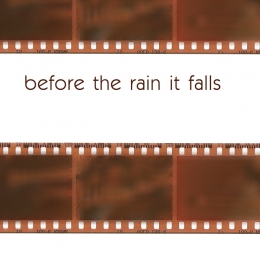art or business
before the rain it falls
Máté Bartha, Gabriella Csoszó, Marcell Esterházy, György Orbán, Gergő Somogyvári - Judit Feszt
curator: Eszter Lázár
We borrowed the title of the exhibition “The Rain Before It Falls” from Jonathan Coe’s novel by the same name. In the book, an elderly woman, while looking through her private photos, recounts the key episodes of her life to a girl who lost her eyesight in childhood. While learning of the life events that span over half a century, the reader catches a glimpse of the unusual circumstances that brought the lives of these the two protagonists together.
The works on display at the kArton exhibition also focus on human relationships, personal ties and their physical and virtual forms of various intensity. The works are confessions that carry traces of undisguised simplicity and honesty of private photos. The focused discipline and detachment that is apparent from the documentation, however, allows the artists to articulate, through their own personal life experiences, shared human feelings and scenarios.
The work by Gergely Somogyvári and Judit Feszt entitled “Tile Letter” is a film letter. The protagonist, Nober, who has moved from Brazil to Portugal, tells his Lisbon story on film to his family, whom he has not seen for 10 years. As the years pass, it becomes harder and harder for the young man to maintain contact with his family members in South America. Although he decides to make an azulejo (ceramic tile picture) for his mother, he keeps procrastinating when it comes to posting it to her. “Tile Letter” won first prize in the category of documentaries at the 40th Hungarian Film Week.
In Marcell Esterházy’s 2005 film “v.n.p V.2.0”, the artist captured his grandfather on film during a family lunch. His photos exhibited at the kArton also have the grandfather as their subject, but not in his physical form; the artist makes the absent relative present by capturing the traces left behind by him in the flat. In the photos taken of the empty rooms the days of the former tenant are called to life by the outlines of the objects and furniture on the wall as well as the memories of the documenting artist.
Máté Bartha, student of the Moholy-Nagy University of Art and Design, researches and documents the everyday life of his grandmother. In his “fieldwork”, he presents the living conditions of his relative while also rendering the defencelessness of a lonely human being perceptible. The system that consists of the physically circumscribable space, the various rooms of the flat and the objects found in them is transformed into the terrain of personal narration.
Gabriella Csoszó’s relatives often model for her works. This time, she captured her parents in moments whose intimacy and touching charm have not faded by the routine of the years. One of the fundamental criteria of the choreography of tying a necktie is the non-transferability of the roles. The division of tasks within the family does not manifest in the form of hierarchical relationships. Constancy signifies a kind of timelessness. The well-practiced movements that are shown in the film – regardless of the passing of time – indicate a soothing sense emotional safety.
György Orbán asked his friends and artist colleagues for their collaboration in realising his latest photo series. He paired the “standard” texts and interesting verbal experiments of internet matchmaking sites – which are growing increasingly popular and operate with more and more registered users – with photo portraits of his acquaintances. What counts more in “finding a partner”: the photo or those few sentences of self-description? Are we biased when we inadvertently associate certain characteristics with certain text-types? What does the photo say about its maker, and about its subject?

